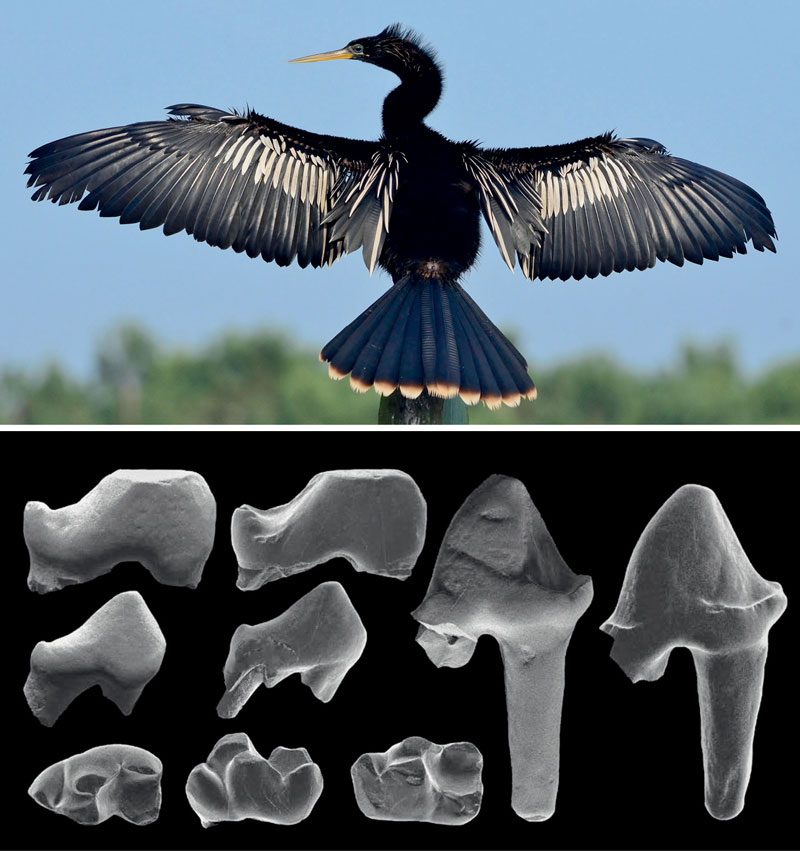
Gareth Rasberry / Wikimedia Commons | GUILHERME, E. et al. The Anatomical Record. 2023 A modern-day anhinga, larger than those that lived in western Amazonia, and the teeth of new marsupial speciesGareth Rasberry / Wikimedia Commons | GUILHERME, E. et al. The Anatomical Record. 2023
Teeth and bones found on riverbanks show that the fauna in what is now the Brazilian state of Acre was greater between 5 million and 15 million years ago than previously thought. During this period, the region was probably home to water birds similar to the anhinga (Anhinga anhinga) and marsupials similar to American opossums (Didelphis sp.). One of the birds was a giant anhinga, of the genus Macranhinga, with an estimated weight of 9 kilograms (kg), and the other an Anhinga minuta weighing 1 kg, which makes it the smallest species of anhinga—current species weigh an average of 1.5 kg. Scientists from the Federal University of Acre (UFAC) examined fragments of pelvic girdles, femurs, and vertebrae found in the Acre River and concluded that between 5 million and 11 million years ago, the two species coexisted with Anhinga fraileyi, described in 1996. The data suggest that anhingas were more diverse in the past—today there are only four species worldwide. Another study by UFAC researchers using teeth found on the banks of the Juruá and Envira rivers, identified six small marsupials between the size of a squirrel and a domestic cat, which lived in the region between 11 million and 15 million years ago. Two of them belonged to the families Palaeothentidae and Abderitidae, which had not previously been described in the Brazilian Amazon (Acta Palaeontologica Polonica and The Anatomical Record, September 2023).
Republish